The best-ever walking harness for your dog (and the must-avoid collars and leads)
September 11, 2018Worried about your pup pulling on their lead? Wish you could enjoy walks as much as they do? It’s time to ditch the collar and lead, and walk a better way.
Loose-lead walking with your pulling-obsessed pup might seem like a pipe dream, but it’s actually totally achievable with a bit of knowledge and the right equipment. And that’s hugely important, because using the wrong walking gear can cause permanent damage to your dog.
So, as part of our Lead By Example campaign, we spoke to RSPCA South Australia Dog Behaviour Specialist Tenelle for the 101 on the best equipment for a safe and comfortable walking experience with doggos, both on and off the lead.
“You can train your dog to walk nicely without using harmful methods, and in the long run you can avoid any resulting behavioural problems too,” Tenelle assured us.
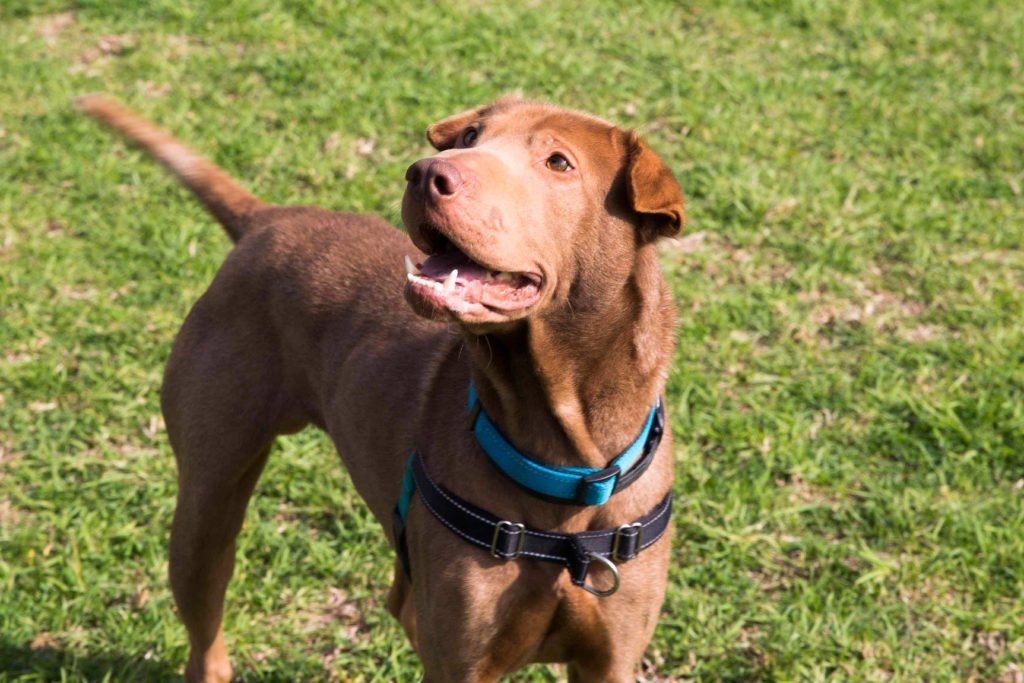
Why you absolutely must get a front-attaching harness
During walks, many owners opt for a collar and lead combo – but this is far from the best option. Instead, our #1 recommendation for dogs is a front-attaching harness and a lead.
This combo – which is perfect for dogs of all breeds and sizes – offers gentle control and encourages loose-lead walking, while avoiding pressure on your dog’s neck or back.
The real magic lies in the way front-attaching harnesses redistribute weight to help prevent pulling. The harness sits behind your dog’s front legs and loops around their chest, with a leash ring at the front.
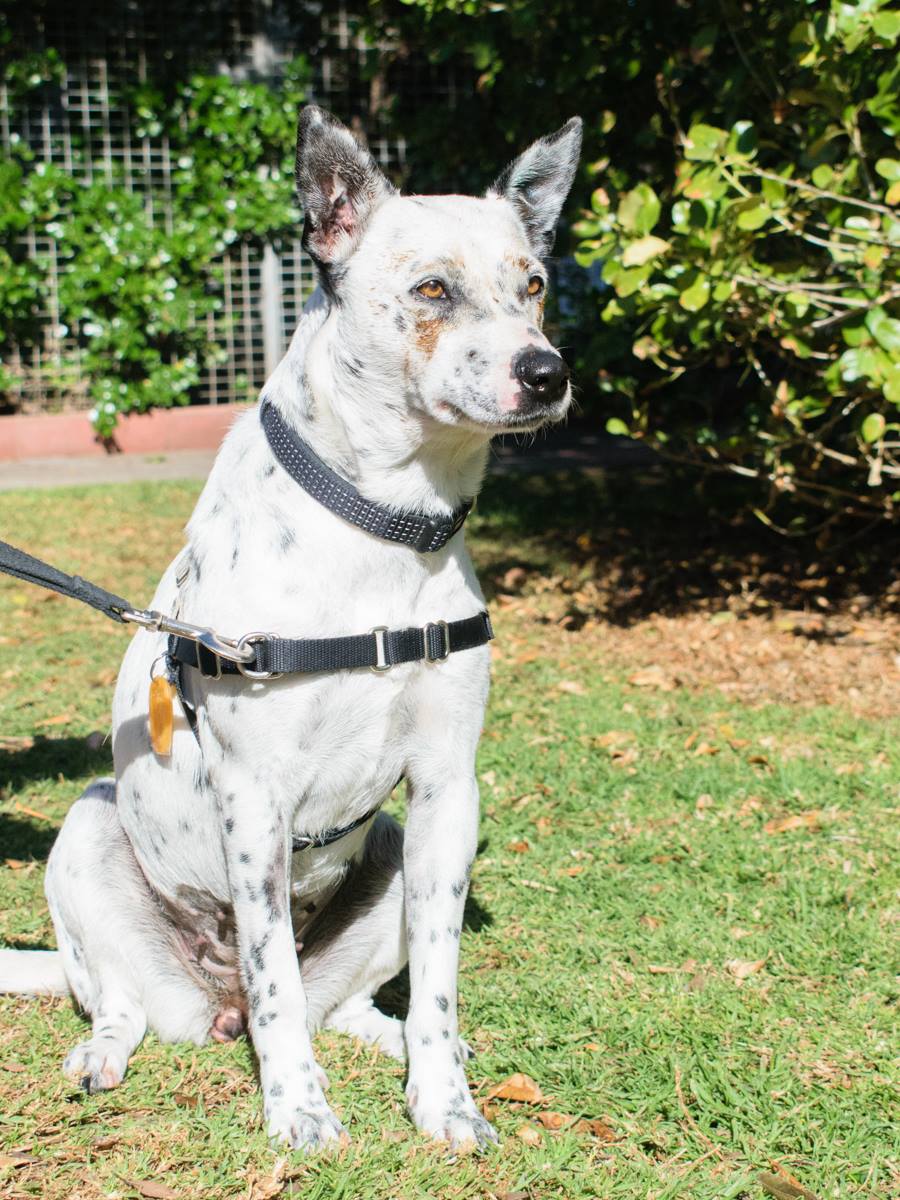
“Because a dog’s centre of gravity is located at the chest, the harness gently turns the dog towards you, which helps stop them pulling,” Tenelle tells us.
Most dogs tend to accept front-attaching harnesses easily. Your dog is also less likely to slip out and escape, unlike the common collar. And there’s little chance of the harness choking your dog – a typical problem with collars. So they’re totally safe, comfortable, and suitable for dogs of all sizes … what could be better?
But one word of warning – it is essential that front-attaching harnesses are fitted correctly. An ill-fitting harness can be extremely uncomfortable for a dog. Those new to harnesses may have some trouble fitting them at first, but never fear! Click here for tips.
You can opt for a back-attaching harness – but only for some dogs
We recommend front-attaching harnesses as the starting point for all dogs, because they discourage pulling in a force-free way that causes no harm or distress to your dog.
But, once you’re confident your doggy has learned to loose-lead walk, the back-attaching harness is a good next step – and still far safer than a collar. In fact, this is the one Tenelle uses for her dog!
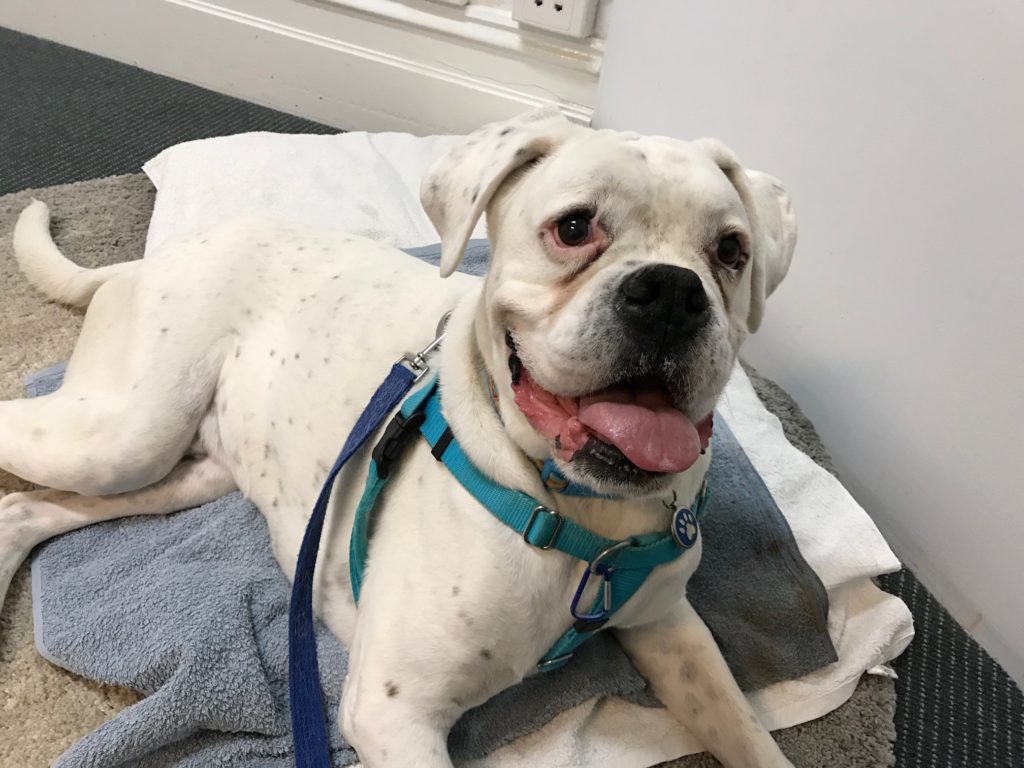
Back-attaching harnesses provide a little more freedom and can make leads easier to manage, since the lead attaches to the back of the dog. With front-attaching harnesses, it can be tricky to stop your dog from stepping over the lead. So, if pulling isn’t a problem for your dog, a back-attaching harness can be more practical.
But do beware – back-attaching harnesses are often ineffective in preventing pulling, as your dog can throw their full body weight into pulling on the lead. So only opt for this harness if your dog’s already a loose-lead pro.
Take the time to choose the perfect lead to pair with your harness
The right lead is just as important as the right harness when it comes to walking your dog.
We recommend choosing a lead made of cotton webbing or similar material, with a length of about two metres – long enough to allow your dog some range to explore, and not so short that your dog starts to pull.
If you have a small dog, choose a thin lead with a small clip, while larger dogs fare better with a thicker lead and larger clip.
We recommend double-ended leads, which can be made by threading the handles of two normal leads together, or you can purchase one. One end of the lead is clipped to the front of the harness and the other to the back of the harness. Your dog is then led from the back attachment, while the front one is used for turning if they start to pull.
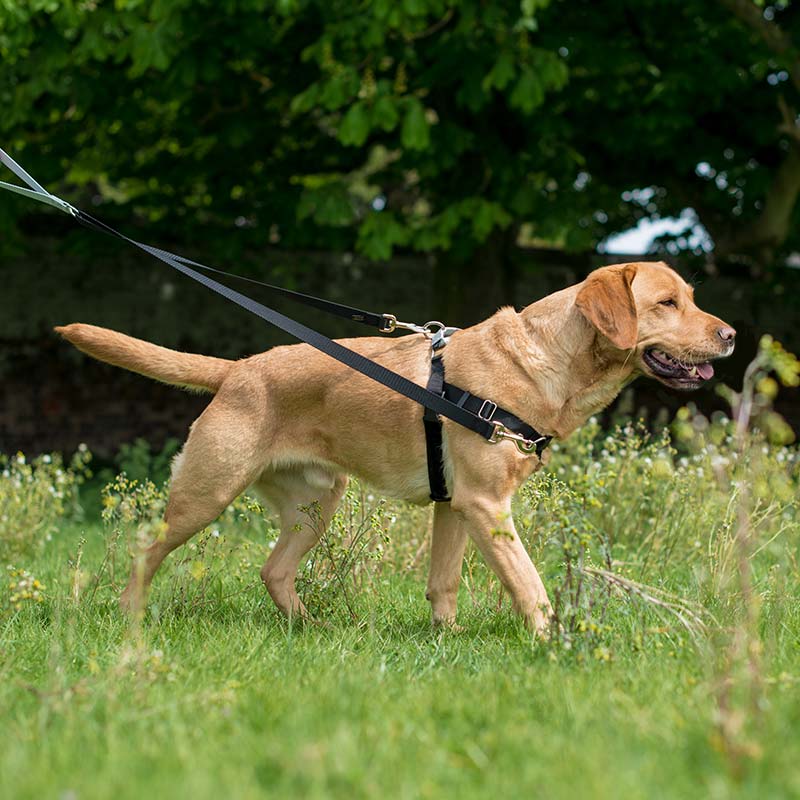
We do not recommend extendable/bungee leads, since these provide less control for you and could damage your dog’s neck. Not only this, but they also encourage pulling.
Collars should be your very last choice for dog walking
In almost all cases, collars should be avoided when walking your dog – unless your pup’s had a medical procedure and the surgery site is under where a harness would sit.
You can still use a collar in your dog’s day-to-day life, especially to hold identification and registration tags. But make sure you choose a comfortable, flat collar, as all other collar types can cause harm. Then, when you’re heading out for walkies, just pop your walking harness over the top.
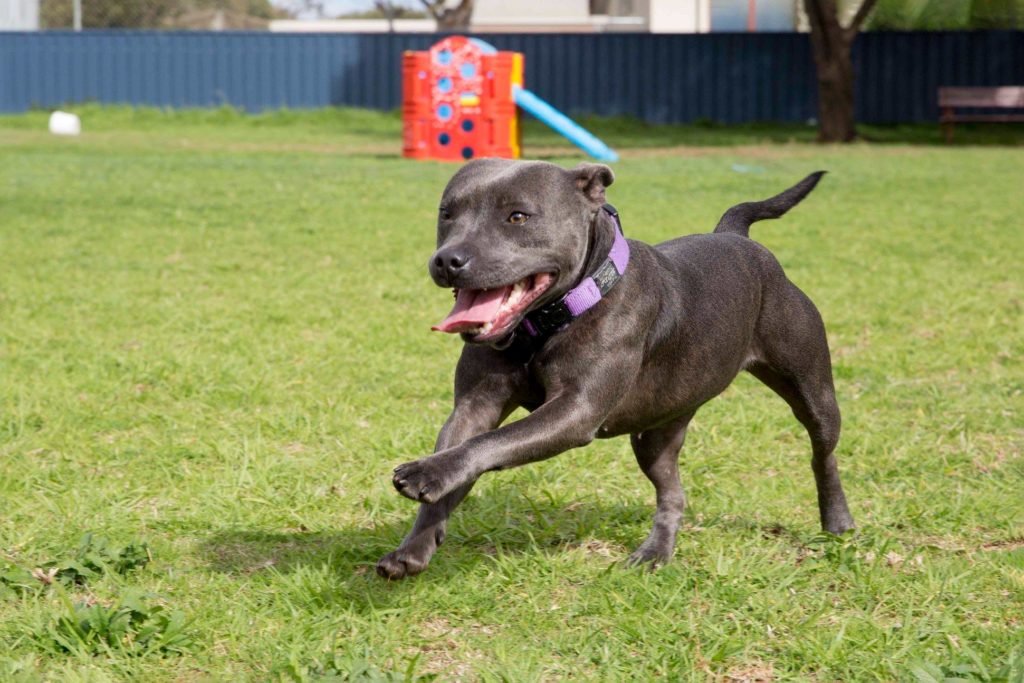
“The only collars we recommend at RSPCA South Australia are flat collars,” Tenelle says.
“To make sure you’re using a comfortable collar, check that you can fit two fingers beneath it – it’s also important that you invest in new collars as your dog outgrows them.”
The worst, must-avoid collars for puppies and dogs
Certain collars such as head, check or prong/pinch are commonly used, but actually should be avoided at all costs.
“The way these collars work is to cause pain when the dog pulls – and the problem is, you don’t know what the dog is going to associate that pain with,” Tenelle says.
Every time a dog is pulled on one of these collars, they might associate this discomfort with something in their environment and become frightened or aggressive towards that thing. It could be their owner, children or other dogs.
“I think that owners see this equipment working so they continue to use it without understanding the ramifications,” says Tenelle. “Maybe the dog will stop pulling when the collar chokes them, but you have no idea what they associate this choking with.”
A closer look at the worst kinds of collars
Martingale collars are less than ideal, since they tighten when the dog pulls, but can be used for dogs with narrow heads, such as greyhounds or whippets. If these collars are made of fabric and correctly fitted with two ends meeting, choking should not be a problem.
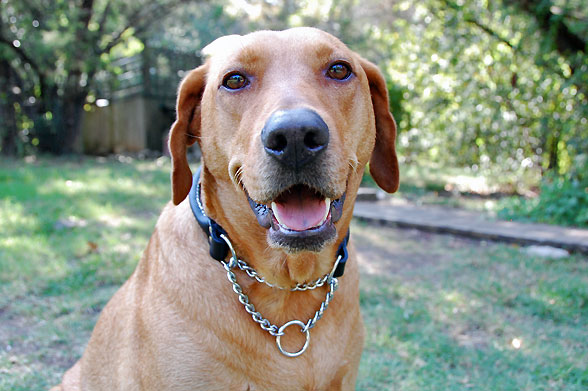
Head collars/halters can jerk a dog’s head to the side, which causes injury. Dogs find them uncomfortable and often have to be trained to accept them, so why not just invest that training into the ideal front-attaching harness instead?
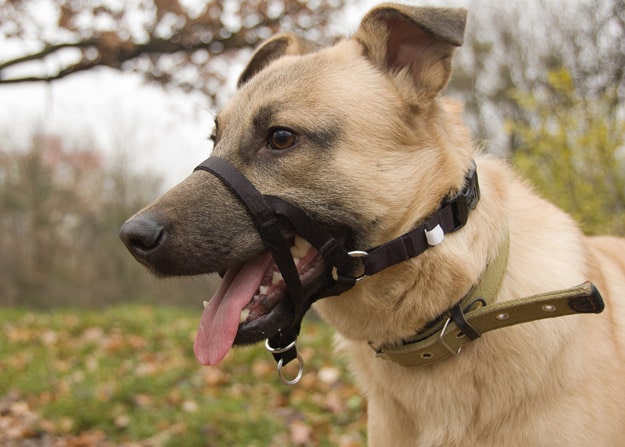
Check collars are sometimes promoted by trainers to correct unwanted behaviours by jerking on the lead to cause a rapid constriction around the neck. They cause severe pain and distress to animals and should never be used.
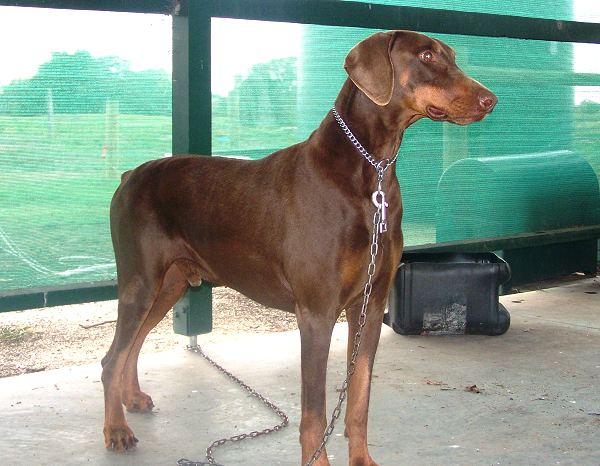
Prong, pinch, or constriction collars are primarily made of metal chain and have a series of fang-shaped metal links, or prongs, with blunted points. When pulled, these tighten and pinch a dog’s neck; they should never be used as they cause injury, and in extreme cases, brain damage.
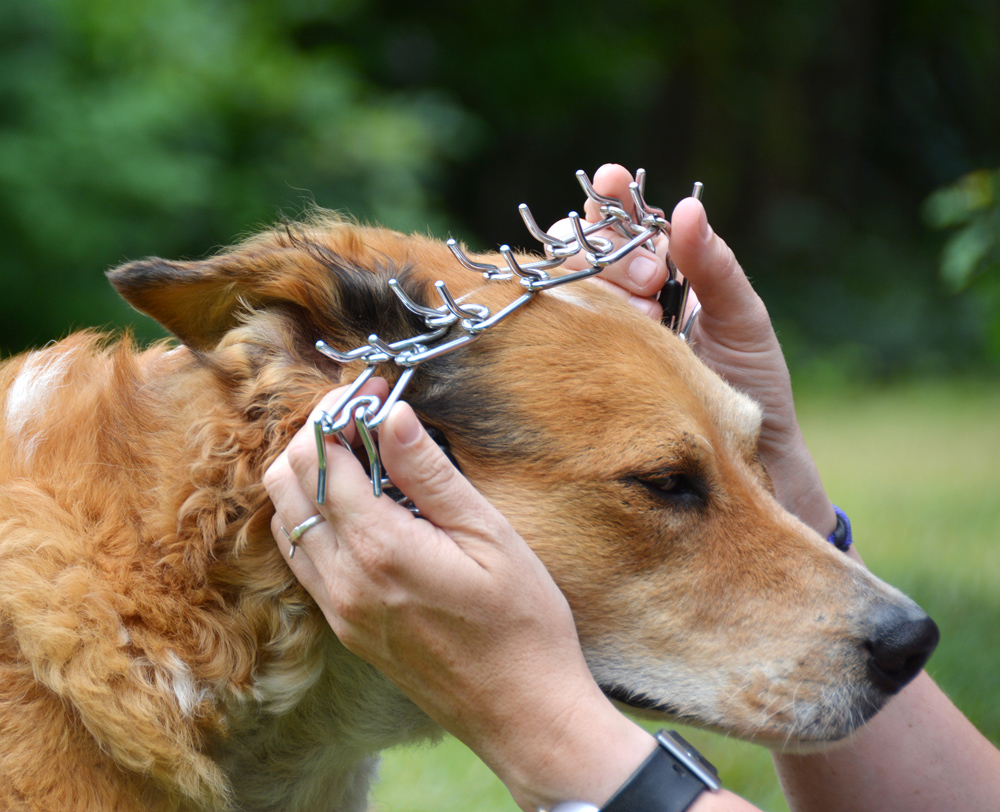
So if your doggo is acting out and you’re not sure why, it could very well be a result of their walking equipment. But don’t worry – it’s never too late to get them onto a harness!
Get access to our free dog training mini course
Want to learn how to train your dog the force-free way? Sign up for our FREE online course. You’ll learn how to communicate with your best friend and teach them how to sit and drop, walk on a lead and more cool tricks.
Simply pop your details in the form below to receive the six-part course direct to your inbox – absolutely free of charge.




These last two collars should be banned and if I saw someone walking with a dog and it had this collar then I would report them.
Our dog Penny uses the check chain but only on walks and we hardly ever use it to ‘check’ her. It is never left on her after walks. However I agree that the last one should be banned
Hi Amelie, even though you rarely “check” your dog, we still strongly recommend against using this type of collar for the reasons given above. Perhaps you might be willing to try one of the other, force-free options and see how Penny goes? :)
Hi, is slip collar ok to use? I tried the front attaching harness before but my dog kept stepping over it . Now with 2 dogs it’ll be too hard to walk both on that.
Hi Sandy, we don’t recommend slip collars. With the front attaching harness, it’s possible that it wasn’t fitted correctly. You can also use the clip on the lead to go through the collar ring and the front attach harness ring until your dog learns to loose lead walk. Thanks!
We walk our dog with a harness, but would like a comfortable collar to attach his ID tag to, it will be a quicker way to have him returned to us should he escape, than waiting for a microchip scan.
He is a 12 month old rescue that we have only had a month, so we aren’t sure how good hos escape skills are!
What is your best recommendation?
Thanks
Hi Belinda, youre dog should always wear a collar for this exact reason. Having a comfortable collar that is fitted well is essential to keep their name tag and council registration tag on them at all times.
We recommended a flat collar with soft fabric and a quick release buckle for safety. Each dog’s fur and skin will react differently to wearing a collar full time, so it can be a good idea to ask advice based on previous experiences. We sell collars at our Lonsdale shelter and PetVille superstore (Hillcrest); you’re welcome to bring your dog in to try on options. Hope that helps!
We have a labradoodle puppy, .can you recommend a make of harness with both front and back clips. Front for training purposes and spot stop pulling and back clip for when fully trained. We live on the Gold Coast. Appreciate your advice… thank you
Hi Maggie, we’d recommend you pop into your local RSPCA branch or a reputable pet store, where they will be able to assess your needs and help correctly fit the harness. Thanks!
Careful also with the front clipped harness, it can create a lot of back issues since it restricts movement and changes the dog’s natural gate. Dogs bend their backs and don’t distribute weight left/right properly on them.
There are many studies about them, I would definitely not recommend them
Hi
Is the front attaching harness suitable for a greyhound? They have such big chests, I’m worried it won’t fit correctly. Our greyhound has a very high prey drive and she is completely uncontrollable when she sees kangaroos hoping. Unfortunately, kangaroos are abundant in our area, and there are no options to avoid them. Please help. I’m desperate.
Hi Franca, some harnesses are suitable for greyhounds. We’d recommend you pop into your local RSPCA branch or a reputable pet store, where they will be able to assess your needs and help correctly fit the harness. Thanks!
I am looking for a solution for our kelpie Daisy, she pulls so hard like she is digging her claws into the footpath. I have tried the back restrained harness, but she pulls sideways and I’m worried she is going to hurt herself. I have also had her nearly pull me over she is so strong any recommendations would be greatly appreciated.
Hi Karen, training might be the answer here. We’d recommend you contact a force-free trainer for help and advice: https://www.rspcasa.org.au/the-issues/force-free-dog-trainers Thanks.
I managed to link her leash to the front of her current harness. Not perfect but I wanted to see if it would work. Omg it was the best walk we have ever had, not loose but not pulling either. I am going to buy her a new better fitting harness with front attachment
Halti collar? Surprised to see it in your “not so good” list
Do you have any recommendations for a no pull harness? We are expecting a baby and would like a harness for the dog that encourages her to walk next to the pram without pulling ahead. Cheers!
Hi I have a very energetic 1yr old mini foxie. I’ve tried countless training methods to try to keep her from pulling while walking, but she is headstrong and independent. While the training has improved her habits a little, she still does as she wants. What harness/lead/collar would you recommend?
Hi Lena, it’s difficult for us to give advice on this without meeting your pup – we’d recommend you consider training with our RSPCA Dog Training school or a reputable force-free trainer. You can find more about that here: https://www.rspcasa.org.au/the-issues/force-free-dog-trainers/ Thank you.
What’s your view on front clip harnesses that attach to the dog’s collar for stability? Eg – halti harness.
My dog is lab crossed with a curly retriever he is 38 kilos I can’t walk him he just pulls so strong a chest harness so it’s not working he hurts me walking him.
I have a border collie x beagle and she will not stay in a harness. We took her and had every harness possible fitted to her and she just lays down and pulls herself out of it. They told me she will always get out of them as she knows exactly what she is doing. She is terrible to walk as she goes from side to side which causes your arms to ache. I was told to try the halter on her as they told me it is the best way to keep her in check. I was told it is the beagle in her that makes her keep walking in a zig zag. She is so smart and I say way too smart. They put a harness on her very tight to see what she would do and straight away she back up and was out of it. What suggestion would you have to solve this problem.
Hi Shelly, we’d definitely recommend you consider training classes to help you and your gorgeous dog learn how to walk calmly on the lead. You can email our team for more information here: [email protected] Thanks!
I have a 78kg Neapolitan Mastiff, will a front attaching harness be suitable? She has lots of excess skin and I don’t know if the x-large harnesses will actually fit her.
I have not gone to the store yet to get her fitted, but I have looked online and cannot find measurements on ones being sold.
Hi
I have two border collies. One 10 month female and a 15 week male. I’m having some trouble walking them together. Could you please suggest which harness would be suitable. Is it OK to use a front attach harness for both if I’m walking both next to each other on my left.
Kind regards
Brigid
Hi Brigid, it’s difficult for us to give advice on this without meeting your dogs. If you’re having trouble walking them together, we’d recommend you consider training with our RSPCA Dog Training school or a reputable force-free trainer. You can find more about that here: https://www.rspcasa.org.au/the-issues/force-free-dog-trainers/ Thank you.